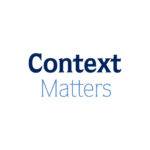By Jen Sanders To deeply understand and fully utilize the EQ-i assessment, each person must engage the scores with both curiosity and focus. The EQ-i’s data need to be understood in the context of the whole individual and his/her life in full. To this end, our coaching work with the EQ-i always begins with unfolding the client’s context. To help us establish that context, we are curious about four topics—or categories– which allow us to more fully understand a client’s life story. We encourage you to not simply look at the scores as you interpret EQ-i data, but consider adding the powerful lens of context. Asking your client questions within the topics below will help you to more effectively understand your client’s narrative.
Goals and Self-Perception: It is important to establish the goals of anyone taking the EQ-i. Is the person a willing (or even eager participant), or was the action coerced or mandated?
Skill and EQ Alignment: Effective interpretation calls for exploring the alignment or EQ results to the client’s duties, roles and responsibilities. How do the client’s EQ strengths contribute to his or her work duties? Which EQ elements most get in the client’s way?
Relationships and Support: Most effective development efforts are undertaken with support—of friends, family, leadership and/or teammates and colleagues. Who in the client’s life provides consistent and meaningful support?
Culture and Atmosphere: In general, what is the culture and general atmosphere of the team or workplace?
To learn more about putting the EQ-i in context or to explore best practices in interpreting the EQ-i in general, come to OKA’s Insight to Action: Sharpening EQ Interpretation Skills, OKA’s newest EQ offering. In this half-day online session, participants learn a number of techniques to help them interpret an EQ-i client’s scores and to help every EQ-i pivot from report to specific action plan.


Leave a Comment